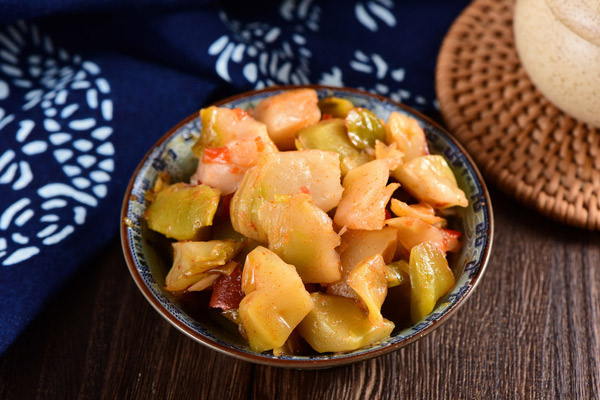Craftswoman preserves tradition of hand-making China's famous pickle
Xinhua | Updated: 2019-05-15 11:20

Wan Shaobi, 53, vividly recalls the first time she learned to make "zhacai" (pickled mustard tuber) at the age of seven.
She hang the stems of newly harvested mustards, the raw material for the widely popular Chinese pickle, on wooden racks lined along the banks of the Yangtze River, waiting for the gentle breeze of the river valley to dry the vegetable.
The dehydrated stems are then slivered, rinsed, pressed and packed into earthenware jars with hot chilies and other spices until they fermented into subtly flavored, crunchy yet tender pickles after about three months.
For Wan, an inheritor of the craft of hand-making zhacai, the tastiest zhacai in China is produced in her hometown, Fuling district in Southwest China's Chongqing municipality.
The history of zhacai-making in Fuling, a major zhacai production base, dates back more than 150 years. The district's traditional method of producing zhacai was listed as a state-level intangible cultural heritage in 2008.
"During my childhood, most families in Fuling made their own zhacai in February and March, the harvest season for mustards. It was regarded by many locals as an important annual family ritual," said Wan, also general manager of a local pickle company.
"But the craft of hand-making zhacai has its lost attraction for young people in recent years, as many of them seek jobs in big cities and choose to buy mass-produced zhacai products," she said, adding that the craft would fade away if it couldn't be passed down to the younger generation.
Wan is determined to change the situation.
Since 2010, she has taught more than 20 apprentices, many of whom are university graduates, how to hand-make zhacai during each year's harvest season.
"I take my apprentices to mustard fields to teach them how to pick the best material for zhacai," she said. "The best mustard tuber should be round-shaped and weigh about 250 grams."
The most difficult process for Wan's apprentices is the preparation of spices, which involves mixing more than 20 kinds of spices, such as chili, peppercorn and anise, according to a fixed ratio.
Wan says it is the careful selection of spices that gives zhacai its delectable aroma and unique flavor -- salty, spicy, sour and umami.
"Thanks to its flavor, zhacai always makes for a savory meal, whether it's simply eaten as a relish with rice, stir-fried with pork slivers or added to broth as a condiment," she said.
Besides training apprentices, Wan has kept a production line for handmade zhacai in her company.
The production line churned out nearly 2,000 tonnes of handmade zhacai last year, accounting for about 5 percent of the company's annual production.
"The price of handmade zhacai is about 10 times that of mass-produced zhacai, but many of our customers say it's worth the price because handmade zhacai is more crisp and has a better taste," Wan said.
So far, Wan has invested over 6 million yuan (about $873,000) in preserving the century-old craft, including producing several zhacai-themed dance shows and establishing a zhacai museum to showcase its history.
She is also planning to cooperate with the local government to introduce the craft to middle school and primary school students.
"The time-consuming process of hand-making zhacai is a symbol of traditional craftsmanship," she said. "I hope more and more young people will carry on the craft."
























